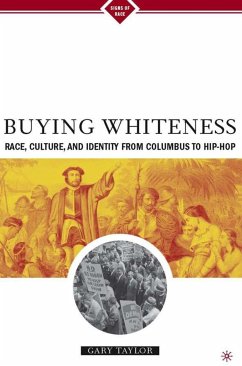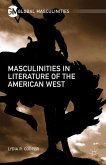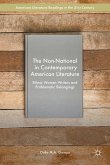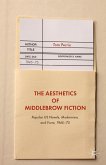When and why did 'white people' start calling themselves 'white'? When and why did 'white slavery' become a paradox, and then a euphemism for prostitution? To answer such questions, Taylor begins with the auction of a 'white' slave in the first African American novel, William Wells Brown's Clotel (1853), and contrasts Brown's basic assumptions about race, slavery, and sexuality with treatment of those issues in scenes of slave marketing in English Renaissance drama. From accounts of Columbus and other early European voyagers to popular English plays two centuries later, Taylor traces a paradigm shift in attitudes toward white men, and analyzes the emergence of new models of sexuality and pornography in an 'imperial backwash' that affected whites as much as blacks. Moving between the English Renaissance and the 'American Renaissance' of the 1850s, this original and provocative book recovers the lost interracial history of the birth of whiteness.
'In this wide-ranging, deftly coordinated, incisively focused book, Gary Taylor addresses two Renaissances. Making a major contribution to the new subfield of whiteness studies in the English Renaissance, Taylor locates the origin of an explicit appeal to white racial identity in the second decade of the 17th century-a turning point he illuminates through strong comparative analysis of the transition from Shakespeare to Thomas Middleton. Moreover, since the book's reach extends to the 19th-century American literary Renaissance, revised to include African-American voices, Taylor also brilliantly reconfigures the overall framework of whiteness studies as a whole. Gary Taylor speaks with contemporary urgency about the persistent problem of white blindness to white skin privilege: presenting a comprehensive, detailed history of white identity formation, Taylor opens our eyes. Future scholarship starts here.' - Peter Erickson, author of Patriarchal Structures in Shakespeare's Drama and Rewriting Shakespeare, Rewriting Ourselves
'Gary Taylor's meditation on whiteness is learned, articulate, and deeply felt. Much of the material will be unfamiliar to most readers, and the argument, original and provocative, genuinely transforms an essential part of the social and cultural landscape. This is an important and exciting book.' - Stephen Orgel, J.E. Reynolds Professor in Humanities, Stanford University, Stanford, USA
'Gary Taylor's meditation on whiteness is learned, articulate, and deeply felt. Much of the material will be unfamiliar to most readers, and the argument, original and provocative, genuinely transforms an essential part of the social and cultural landscape. This is an important and exciting book.' - Stephen Orgel, J.E. Reynolds Professor in Humanities, Stanford University, Stanford, USA








